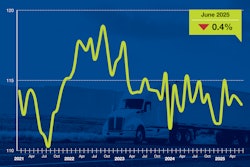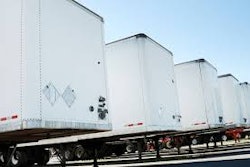Preliminary net orders for Class 8 trucks and tractors in July reached 12,700 units, a 42% increase from June but a 7% drop compared to the same month last year, continuing a streak of seven straight year-over-year declines, according to FTR Transportation Intelligence.
Orders remain well below July’s 10-year average of 19,974 units, which FTR noted reflects ongoing caution among fleets amid trade tensions, fluctuating tariffs, and economic uncertainty affecting freight activity.
FTR reported both vocational and on-highway segments showed month-over-month improvement, however, the overall year-over-year drop was largely driven by weakness in the on-highway segment, pointing to challenges for carriers in the long-haul space. For the 2025 order cycle (September 2024 – July 2025), order intake is 15% below last year’s pace. Over the past 12 months, total Class 8 orders have reached 254,349 units.
Ongoing volatility in tariffs and continued sluggishness in the economy and freight markets are weighing heavily on Class 8 demand, said Dan Moyer, senior analyst for commercial vehicles at FTR.
Moyer highlighted a 30% year-over-year decline in year-to-date net orders, adding, “Class 8 market uncertainty is further elevated due to the potential imposition of Section 232 tariffs specifically targeting Classes 4-8 trucks, tractors, and related components.”
Section 232 tariffs would include materials vital for truck assembly like aluminum and steel.
The lack of clarity surrounding potential changes to the EPA’s 2027 NOx emissions standards is also contributing to delayed fleet investment, Moyer said.
[RELATED: Repeal of truck emissions regs 'doesn’t help the trucking industry']
Additionally, he said that high inventory levels are compounding the issue, putting downward pressure on Class 8 production.
“While the economy continues to grow, expanding 3% quarter-over-quarter in Q2, uncertainty, elevated equipment prices, and emerging signs of economic softness are all weighing on commercial vehicle demand,” said Carter Vieth, research analyst at ACT Research.
Vieth said key freight-generating factors like housing and manufacturing remain weak, with manufacturers cutting jobs for three consecutive months.
Although consumer spending remains relatively resilient, Vieth said that tariff-related price increases and a weakening labor market may soon curb demand for goods.














